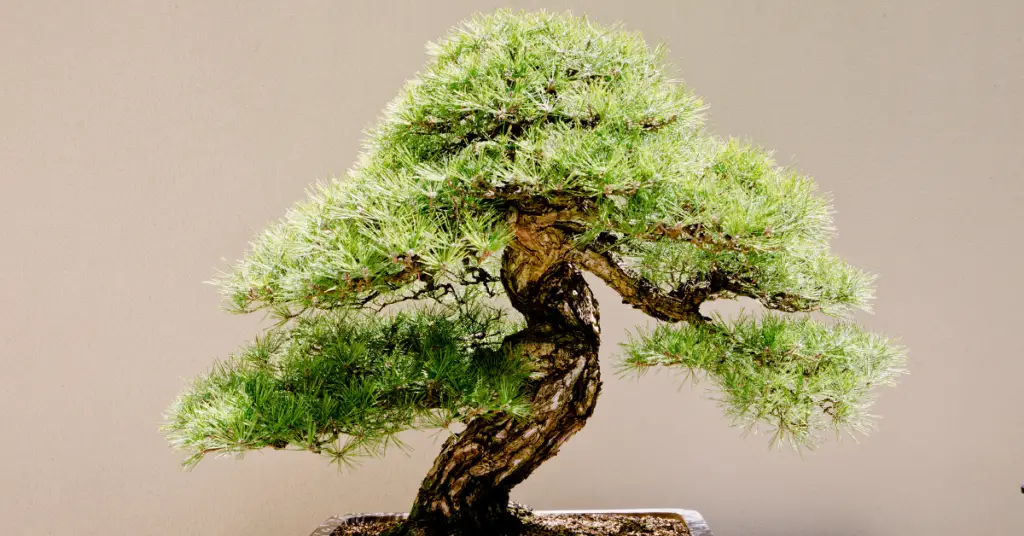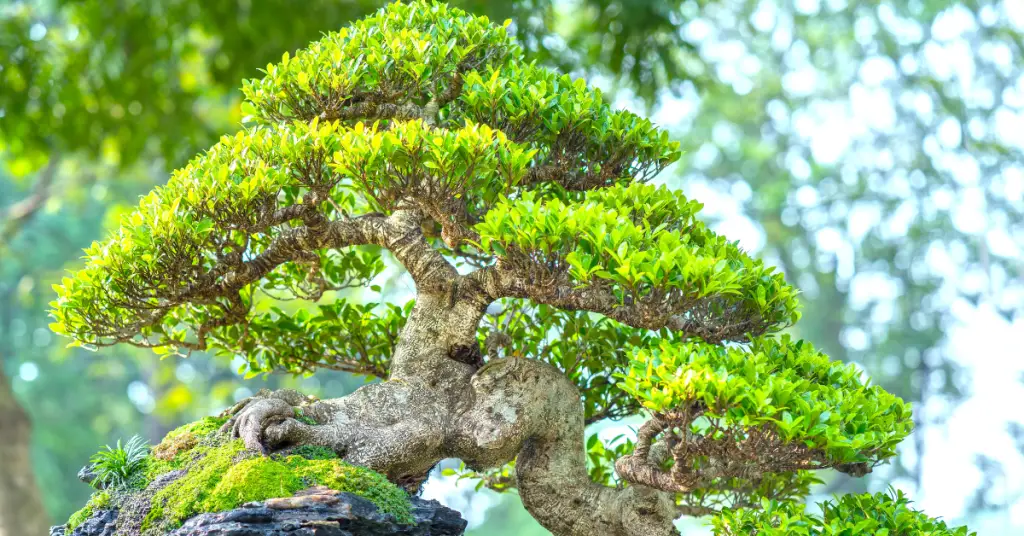Are Bonsai Good Houseplants? Yes, Bonsai trees can be good houseplants. However, it’s essential to note that they require specific care and attention due to their unique needs, such as adequate light, humidity, and regular maintenance. If you’re willing to provide the necessary care, they can thrive indoors and make beautiful additions to your home.
Are you considering adding a bonsai to your indoor plant collection? Discover the benefits of bonsai as houseplants and explore popular species that thrive indoors.
Learn about important factors to consider for indoor bonsai care and essential tips for keeping your bonsai healthy. However, be prepared for potential challenges that come with growing bonsai indoors.
By the end, you’ll have the information you need to make an informed decision and create a sense of belonging with your bonsai in your home.
Key Takeaways
- Bonsai trees enhance indoor ambiance with tranquility and natural beauty.
- Bonsai trees require regular maintenance and long-term commitment for proper care.
- Bonsai trees offer aesthetic appeal with their intricate forms and miniature size.
- Growing bonsai trees indoors can present challenges but can also be captivating and rewarding.
What Are The Benefits of Bonsai as Houseplants?
One of the key benefits of having bonsai as houseplants is that they require minimal space and maintenance. Bonsai trees are known for their compact size, making them perfect for small living spaces such as apartments or offices. They can be easily placed on windowsills, tabletops, or even hung from the ceiling, adding a touch of nature and beauty to any room.
Another benefit of bonsai as houseplants is their ability to serve as decorative pieces. Bonsai trees are often considered living works of art, with their intricate branches, delicate leaves, and captivating shapes. They can be styled in various ways, allowing you to express your creativity and personal taste. Whether you prefer a traditional, formal style or a more modern, abstract design, bonsai trees can be tailored to suit your aesthetic preferences and complement your home decor.
For beginners, certain bonsai species are particularly well-suited. Species such as the Ficus, Chinese Elm, and Juniper are known for their resilience and adaptability, making them ideal choices for those new to bonsai cultivation. These species are relatively easy to care for and can tolerate a wide range of environmental conditions, making them forgiving of beginner mistakes.

Popular Bonsai Species for Indoor Growing
To continue the discussion on bonsai as houseplants, let’s explore the popular bonsai species that thrive indoors. When it comes to bonsai species suitable for indoor growing, there are a few that stand out. One such species is the Ficus bonsai.
Ficus trees are known for their resilience and adaptability, making them ideal for indoor cultivation. They require a well-draining soil mix, consisting of components such as peat moss, perlite, and sand. This ensures proper moisture retention without waterlogging the roots.
Another popular indoor bonsai species is the Chinese Elm. Known for its beautiful and delicate leaves, the Chinese Elm is a hardy tree that can withstand indoor conditions. It prefers a well-draining soil mix similar to the Ficus bonsai, as this helps prevent root rot.
When it comes to pruning techniques, both the Ficus and Chinese Elm benefit from regular maintenance. This includes trimming back new growth to maintain the desired shape and size of the bonsai. Pruning also helps promote branching and encourages the development of a dense canopy.
Factors to Consider for Indoor Bonsai Care
When caring for indoor bonsai, there are several factors you should consider to ensure their health and growth. Here are some key factors to keep in mind for indoor bonsai care:
- Lighting: Adequate lighting is crucial for the health of your indoor bonsai. Most bonsai species require bright, indirect light for at least 4-6 hours a day. Consider placing your bonsai near a south-facing window or using artificial grow lights to provide the necessary light.
- Temperature and Humidity: Bonsai thrive in stable temperatures ranging from 60-75°F (15-24°C). Avoid placing your bonsai near drafts or sudden temperature changes. Additionally, bonsai prefer higher humidity levels, so placing a humidity tray filled with water near your bonsai can help maintain the desired humidity.
- Watering and Soil: Proper watering is essential for the well-being of your indoor bonsai. Water your bonsai thoroughly, allowing the water to drain out completely before watering again. It’s important to maintain a consistent watering schedule and avoid overwatering or underwatering. Using well-draining bonsai soil will also help prevent waterlogging and root rot.
By considering these factors and providing the necessary care, you can ensure the health and growth of your indoor bonsai.
Remember that each bonsai species may have specific care requirements, so it’s important to research and understand the needs of your particular bonsai to provide the best care possible.

Essential Tips for Maintaining Healthy Bonsai Indoors
Maintaining healthy bonsai indoors requires proper care and attention to their specific needs. When it comes to indoor bonsai watering, it’s crucial to strike a balance between overwatering and underwatering.
Bonsai trees should be watered thoroughly, allowing the water to soak into the entire root system. However, it’s important to avoid leaving the bonsai tree sitting in standing water, as this can lead to root rot. Regularly check the moisture level of the soil by inserting a finger or a moisture meter to determine if watering is necessary.
In addition to watering, indoor bonsai lighting is another essential aspect of their care. Bonsai trees require adequate light to thrive, but direct sunlight can be harmful. Place your bonsai tree near a bright window where it can receive indirect sunlight for several hours each day.
If natural light is limited, you can supplement it with artificial grow lights specifically designed for plants. These lights should be positioned a few inches above the bonsai tree and kept on for 12-16 hours a day.
Maintaining healthy bonsai indoors requires attention to detail when it comes to watering and lighting. By providing the right amount of water and ensuring adequate light exposure, you can create an optimal environment for your bonsai tree to flourish.
Potential Challenges of Growing Bonsai Indoors
One potential challenge of growing bonsai indoors is finding the right balance of humidity for optimal growth. Maintaining the proper moisture levels in the air is crucial to the health and vitality of your bonsai.
Here are some challenges you may encounter and tips to overcome them:
- Low humidity: Dry indoor environments can cause the soil to dry out quickly, leading to stressed bonsai. To combat low humidity:
- Group your bonsai together: Placing multiple plants close together creates a microclimate of higher humidity.
- Use a humidity tray: Fill a tray with water and place your bonsai on top. As the water evaporates, it increases the moisture around the plant.
- Mist your bonsai: Regularly misting the leaves and soil helps to increase humidity levels.
- High humidity: Excessive moisture can promote the growth of mold, mildew, and pests. To manage high humidity:
- Provide proper ventilation: Open windows or use fans to circulate air and prevent stagnation.
- Avoid overwatering: Ensure proper drainage and allow the soil to dry partially between waterings.
- Use a dehumidifier: If your indoor environment is consistently humid, a dehumidifier can help maintain optimal moisture levels.
- Temperature fluctuations: Indoor temperatures can fluctuate, especially near windows or heating/cooling sources.
To Mitigate Temperature Challenges:
- Place your bonsai away from extreme temperature zones.
- Use curtains or blinds to regulate the amount of direct sunlight or cold drafts reaching your bonsai.
- Monitor the temperature regularly and adjust as necessary.
Are Bonsai Good Houseplants For Beginners?
Bonsai trees can be good houseplants for beginners, but selecting the right species is crucial. Opt for beginner-friendly varieties like Ficus, Jade, or Chinese Elm, as they are more forgiving of minor mistakes in care.
Bonsai cultivation requires attention to factors such as light, humidity, and watering. Placing them near a south or east-facing window for adequate light, using humidity trays, and learning the proper watering technique are essential for success.
While Bonsai trees demand commitment and patience, starting with a beginner-friendly species and gradually gaining experience can make them rewarding houseplants for those new to the art of Bonsai.
Frequently Asked Questions
Can Bonsai Be Grown Outdoors or Are They Strictly Indoor Plants?
Growing bonsai trees outdoors or indoors has its pros and cons. Outdoors, they thrive in natural conditions but require more maintenance. Indoors, they offer beauty and convenience, but need special care to ensure proper light, humidity, and temperature.
How Often Should I Water My Indoor Bonsai?
To care for indoor bonsai during winter, water them when the soil feels slightly dry. The best soil mix for indoor bonsai trees should be well-draining and contain a balanced blend of organic and inorganic components.
Are There Any Specific Lighting Requirements for Indoor Bonsai?
To provide proper lighting for your indoor bonsai, you need to consider its specific lighting requirements. Indoor bonsai generally thrive in bright, indirect light. Place your bonsai near a window, ensuring it receives enough light without being exposed to direct sunlight for extended periods.
Can I Fertilize My Indoor Bonsai With Regular Houseplant Fertilizer?
Yes, you can fertilize your indoor bonsai with regular houseplant fertilizer. However, it is important to consider the specific fertilizing techniques for bonsai and explore alternative fertilizers that are tailored to their unique needs.
How Long Does It Take for a Bonsai Tree to Reach Its Mature Size Indoors?
To determine how long it takes for a bonsai tree to reach its mature size indoors, you need to consider the specific species, care techniques, and environmental conditions. Pruning techniques and common challenges in growing bonsai indoors also play a role.
Conclusion
In conclusion, bonsai can make excellent houseplants due to their numerous benefits, such as their aesthetic appeal and ability to promote relaxation.
Popular bonsai species for indoor growing include the Chinese Elm, Ficus, and Juniper.
Factors to consider for indoor bonsai care include proper watering, lighting, and temperature control.
By following essential tips for maintaining healthy bonsai indoors, such as regular pruning and fertilizing, individuals can enjoy the beauty of these miniature trees in their homes.
However, potential challenges, like pest infestations and limited space, should also be considered before making a decision.





